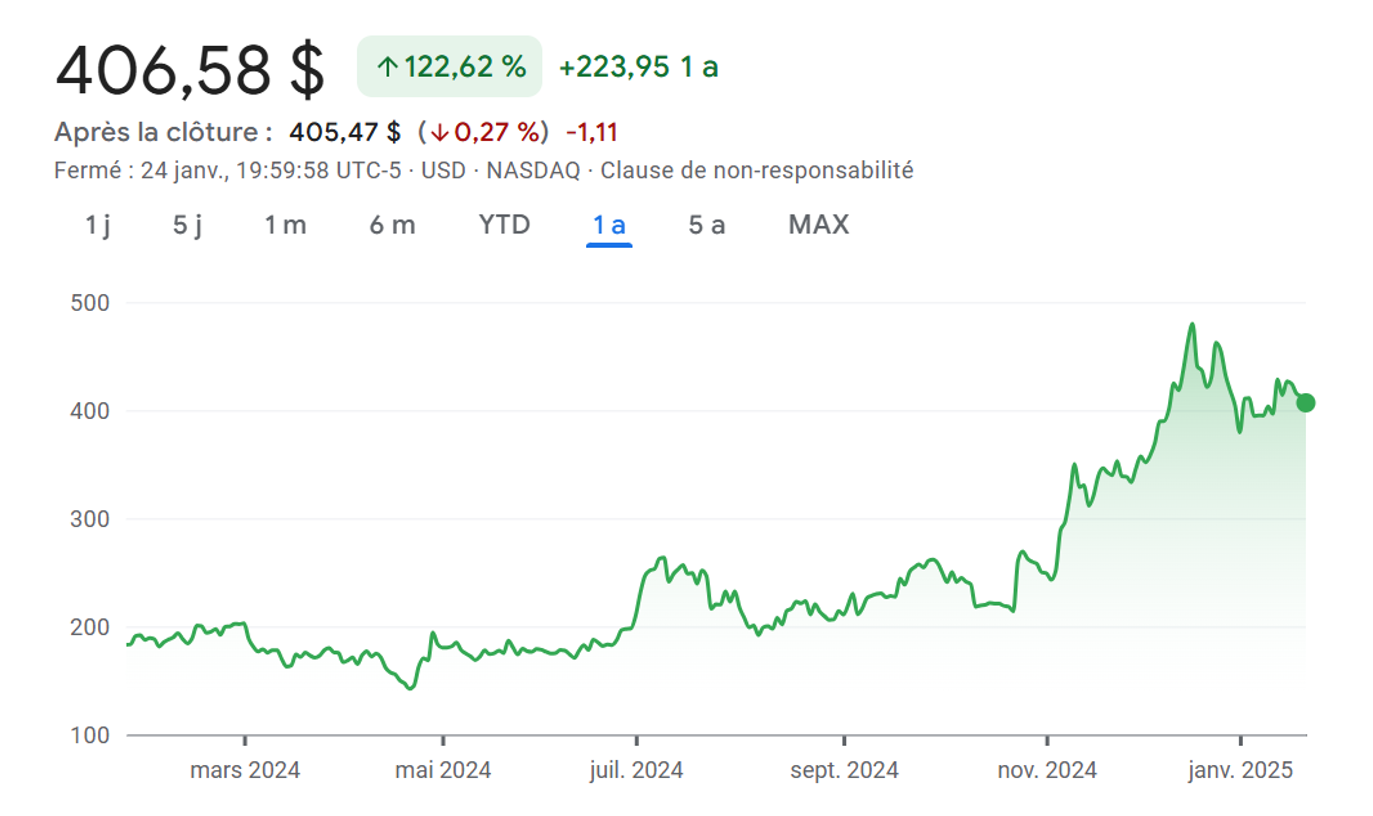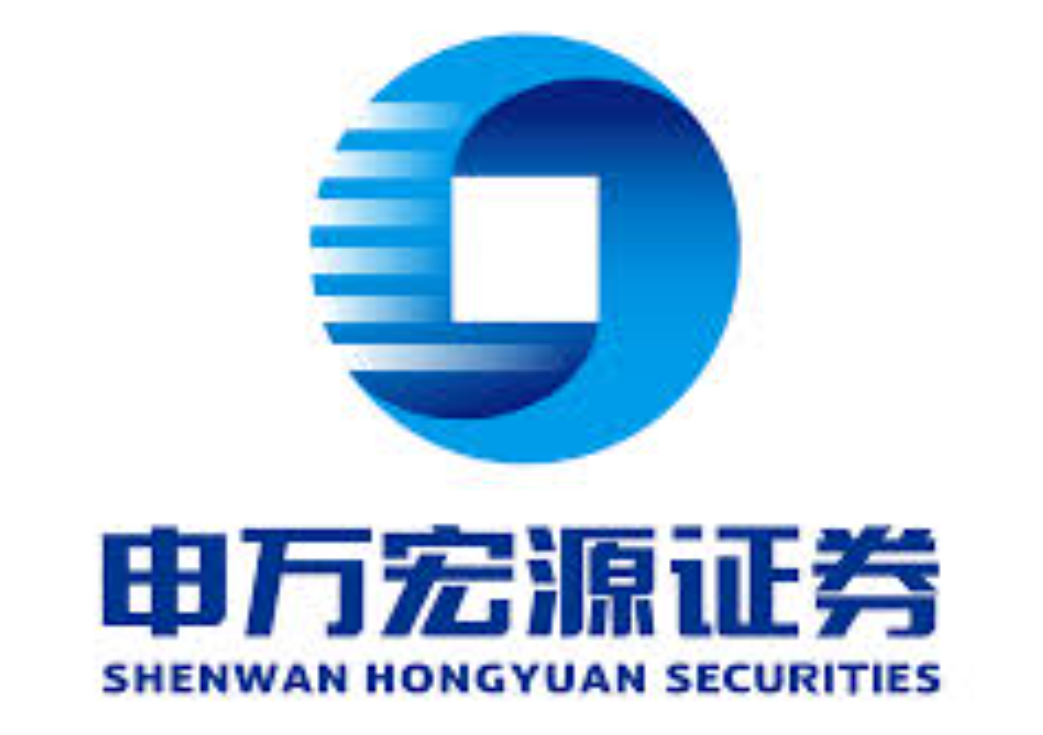
In this article, Hongting LIU (ESSEC Business School, Master in Strategy & Management of International Business (SMIB), 2021-2022) shares her insight regarding the influence of Trump’s wining in the election of the US president in November, 2024 in the technology industries.
Tesla’s Stock Performance is outstanding during 2024 especially after the result of the election was released
Tesla’s stock exhibited significant volatility and momentum during Trump’s presidency:
Evolution of Tesla’s stock price.

Source: Yahoo! Finance.
- Election-Driven Surge: Following Trump’s re-election in 2024, Tesla’s stock surged nearly 13% in a single day due to investor optimism about pro-business policies.
- Peaks and Corrections: By December 2024, Tesla’s stock reached a historic high of $479.8 per share but later adjusted to $379.28 in January 2025.
- Trading Range Formation: The stock fluctuated between $380 and $480, reflecting divided sentiment on its future potential.
Reasons Behind Tesla’s Stock Surge
Trump may use pro-Business Policies like he did from 2017 to 2021
Donald Trump’s return to the presidency allows for an assessment of potential policies based on his previous term from January 2017 to January 2021. During his first administration, policies such as tax reforms, deregulation, and a pro-business stance were introduced. These measures aimed to foster investor confidence and support domestic industries. Corporate tax cuts and relaxed regulatory requirements provided particular advantages to high-growth sectors, including technology and green energy, benefiting companies like Tesla. The administration also emphasized economic nationalism and prioritized local industries. Policies aimed at reducing taxes and loosening employment regulations were designed to enhance the competitiveness of American businesses, particularly those reliant on research and development (R&D) and capital investment. Additionally, diplomatic and trade relationships with Middle Eastern countries were strengthened, resulting in energy agreements that supported collaboration on clean energy initiatives. These agreements promoted the adoption of renewable energy technologies and created opportunities for companies like Tesla to contribute to the modernization of energy infrastructure in the region.
The winning of Trump triggers the positive emotion to Elon’s businesses
Tesla’s CEO, Elon Musk, is considered to be an informal advisory role in Trump’s administration further bolstered Tesla’s growth trajectory. The victory of Trump gives the market the confidence in Elon’s companies. The global push for electric vehicles (EVs) gained momentum during this period, driven by government incentives and growing environmental awareness. As a leader in the EV industry, Tesla became a focal point for investors aligning with long-term global trends.
Future Trends in U.S. Tech Stocks
AI Integration
Advancements in artificial intelligence (AI) are expected to drive significant gains for tech companies. Tesla, leveraging AI in autonomous driving systems, stands to benefit from these developments.
Sustainability Focus
Global trends toward sustainability, including renewable energy and EV adoption, will continue to bolster companies like Tesla aligned with these priorities.
Regulatory Dynamics
Post-Trump regulatory scrutiny may increase, but the tech sector’s central role in innovation ensures resilience in the face of challenges.
Caution: Avoid Blindly Following Market Trends
While Tesla’s stock has delivered exceptional returns, its high volatility underscores the need for caution. Blindly chasing high-performing stocks can lead to financial losses, especially in speculative environments. In fact, from the middle of December 2024 to the January 2025, there is a volatility of the stock performance. The long term performance of Tesla should be estimated based on its annual report regarding its revenues, new AI technology, profits margins, energy & storage business growth, and also the demand and the competition of the global electric automobile market. We should not judge everything based on the emotion of market even though the emotion of the market should never be ignored.
Conclusion
Donald Trump’s presidency marked a transformative period for the U.S. economy, particularly for the technology sector. Tesla’s growth trajectory reflects the broader trends in innovation and sustainability. Moving forward, technological advancements and global shifts toward sustainability will continue to shape the market. Strategic planning and prudent investment remain essential in navigating these complexities.
Related posts on the SimTrade blog
▶ Marine SELLI Trump Trade
Useful resources
Barron’s (January 23, 2025) “EV Charging Stocks Are Sliding. How Tesla Stands to Gain,” Barron’s, January 23, 2025
Barron’s (January 23, 2025) Tesla Stock Will Get Help From Trump, Believe Investors. But How?
The Guardian (January 27, 2025) Charles Koch’s network launches $20m campaign backing Trump tax breaks
CNN Business (April 15, 2019) Trump’s tax cuts: 4 ways they changed the American economy
Forbes (March 14, 2018) Why Trump’s Tax Reform Will Spark Continued Small Business Growth
About the author
The article was written in January 2025 by Hongting LIU (ESSEC Business School, Master in Strategy & Management of International Business (SMIB), 2021-2022).


